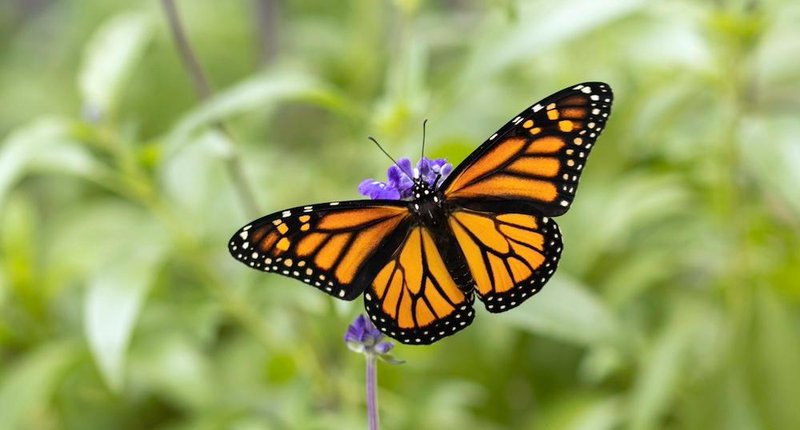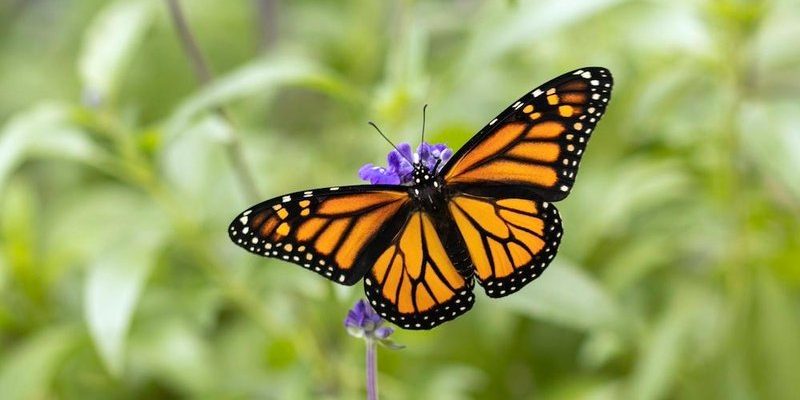
You might be surprised to know that while monarch butterflies are not dangerous to humans, there are some intriguing facts that make them unique in the insect world. Think of them as nature’s little magicians. They have a few tricks up their sleeves, particularly when it comes to their diet and life cycle. As we explore their world, you’ll find out how these butterflies interact with humans and why they’ve earned both admiration and caution in certain contexts.
Understanding Monarch Butterflies
Monarch butterflies are known for their long migrations, traveling thousands of miles from North America to central Mexico each year. This journey isn’t just impressive; it’s vital for their survival. During their migration, these butterflies gather in groups, creating striking sightings that can be breathtaking to observe.
Monarchs thrive on nectar from flowers, which means they play an essential role in pollination. While they’re often seen fluttering among beautiful blooms, they’re also known for their striking orange and black coloration. This color isn’t just for show; it serves as a warning to predators that they taste bad. This defense mechanism keeps them safe from birds and other animals, effectively making them feel dangerous even if they aren’t.
Are Monarch Butterflies Poisonous?
Here’s a fun fact: monarch butterflies are technically toxic to some predators. This toxicity is due to the milkweed plants that caterpillars munch on during their larval stage. The milkweed contains compounds called cardenolides, which give monarchs their signature bad taste.
So, while they might not pose a direct threat to humans, the question remains—can they harm us? The answer is a resounding no. Humans can handle monarchs without worrying about toxicity. It’s just as safe to admire them in your garden as it is to snap a few pictures. However, it’s worth noting that if you were to eat a monarch (not that we recommend that!), you wouldn’t have a pleasant experience!
Can Monarch Butterflies Hurt Humans?
It’s common to feel a bit uneasy around insects, especially those that are bright and colorful. But when it comes to monarch butterflies, rest assured—there’s no danger to humans. Monarchs are gentle creatures that don’t bite or sting. If you handle them (with gentle hands), they’re more likely to flutter away than to cause any harm.
In rare cases, some individuals might be allergic to butterfly wings or the dust-like scales they can shed. It’s similar to how some people react to dust or pollen. If you’re allergic, you might experience mild irritation if a butterfly flutters too close, but this is very uncommon. Most people can enjoy watching these insects without any worries at all.
The Benefits of Monarch Butterflies
Beyond their beauty and unique characteristics, monarch butterflies offer several benefits to the environment and even to us. As pollinators, they help plants reproduce, leading to healthier ecosystems. And quite frankly, who doesn’t enjoy a garden filled with vibrant flowers?
Furthermore, monarchs play a role in educational programs. Schools and organizations use monarch butterflies to teach children about life cycles, ecosystems, and the importance of conservation. Observing these butterflies can inspire a sense of wonder and deeper appreciation for nature. Watching them flutter around teaches us about the interconnectedness of life, from the smallest insect to the biggest tree.
Conservation and the Future of Monarch Butterflies
Unfortunately, monarch butterflies face threats from habitat loss, climate change, and pesticide use. These factors have led to a significant decline in their populations. This is where we can all play a part. By planting milkweed and native flowers in our gardens, we can help provide food and shelter for these incredible insects.
Even small efforts can make a big difference. Consider joining local conservation groups, advocating for butterfly-friendly habitats, or simply educating others about the importance of protecting these beautiful creatures. Every little action counts.
Misconceptions About Monarch Butterflies
There are a lot of myths floating around about butterflies in general. One common misconception is that all butterflies are harmless. While monarchs are indeed safe, other species might not be as inviting. Some butterflies may mimic the look of the monarch to ward off predators, creating a beautiful but potentially misleading picture.
Another myth is that butterflies can be harmful to plants. However, monarchs are different; they solely feed on nectar and do not harm the blossoms they visit. So, if you see a monarch in your garden, it’s more of a good omen than a pest!
The bottom line is that monarch butterflies are not dangerous to humans. These vibrant insects provide beauty, ecological benefits, and opportunities for education. They symbolize resilience, especially as they navigate their extensive migrations each year.
So next time you see a monarch fluttering by, take a moment to appreciate its beauty and the role it plays in our ecosystem. Whether you’re admiring them in your garden or learning about them in school, these butterflies offer a glimpse into the wonder of nature. In a world that can feel chaotic, it’s nice to know that monarchs remind us of the simple joys and beauty that surround us.

